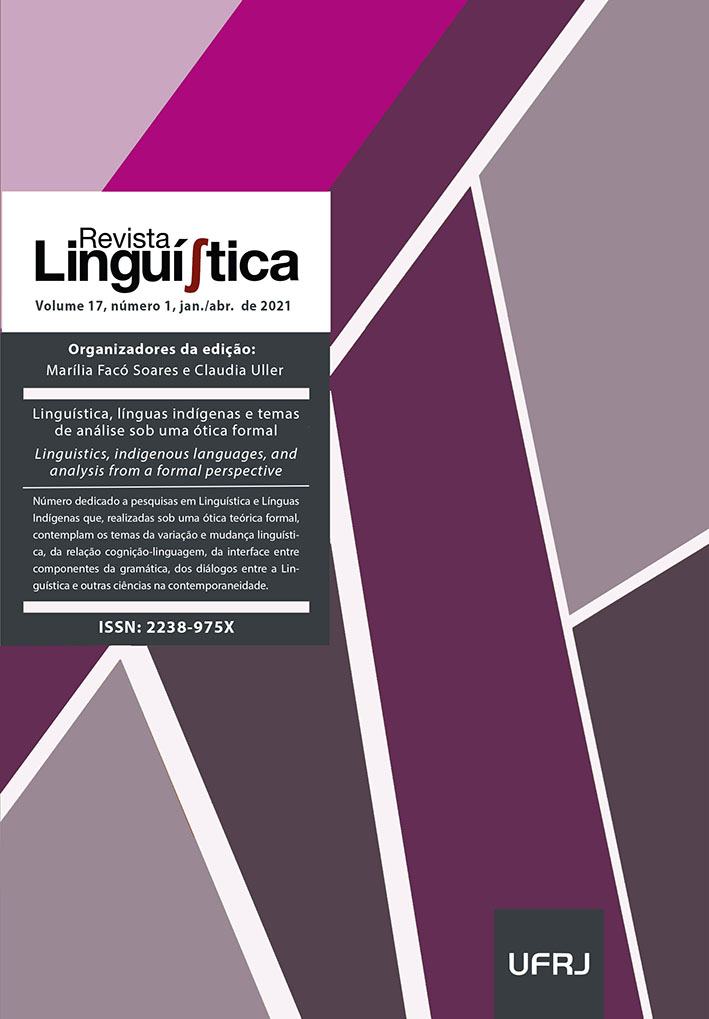Coronal codas and phonotactics in Tupi-Guarani languages
DOI:
https://doi.org/10.31513/linguistica.2021.v17n1a54118Keywords:
Tupi-Guarani languages, phonotactics, syllable structure.Abstract
This paper discusses the phonotactic organization of conservative Tupi-Guarani languages, and of Proto-Tupi-Guarani, by focusing on the analysis of the word-final/pre-pausal coronal approximant [j]. After illustrating how confusion prevails in currently accepted analyses of this segment, which is often considered both a consonant and a member of a diphthong, I argue that the analysis of [j] as a consonant is preferable. This claim, coupled with the auxiliary hypothesis that Proto-Tupi-Guarani phonotactics was subject to a version of the Syllable Contact Constraint, helps explain two otherwise disparate facts about Tupi-Guarani phonotactics: The impossibility of having complex -jC final codas, and the limitation of medial codas to -j.Downloads
Published
Issue
Section
License
Authors who publish in the Revista Linguí∫tica agree with the following terms:
The authors maintain their rights, ceding to the journal the right to first publication of the article, simultaneously submitted to a Creative Commons license permitting the sharing with third-parties of published content as long as it mentions the author and its first publication in the Revista Linguí∫tica.
Authors may enter into additional agreements for the non-exclusive distribution of their published work (for example, posting in online institutional or non-profit repositories, or book chapters) so long as they acknowledge its initial publication in the Revista Linguí∫tica.

The journal Revista Linguí∫tica is published by the Post-Graduate program in Linguistics of UFRJ and employs a Creative Commons - Attribution-NonCommercial 4.0 International (CC-BY-NC).









